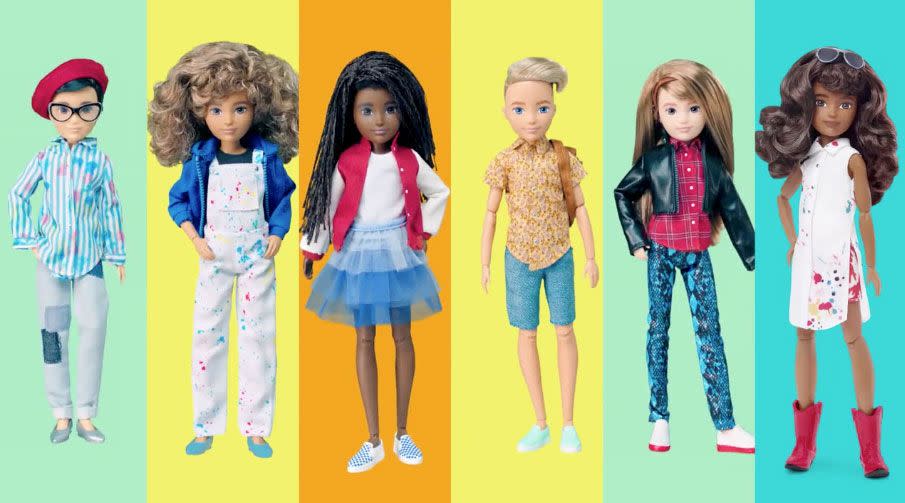Mattel Says Their New Gender-Neutral Dolls Will Help Boys Become Better Fathers
Mattel, the toy manufacturer behind Barbie, announced Tuesday night that it would roll out a line of gender-neutral dolls, which aren't identifiable as either “boy” or “girl.”
The business-savvy (arguably virtue-signaling) announcement was unsurprisingly met by the sound of angry, bigoted knuckles cracking over basement keyboards across the country—hell, some of you are probably hate-commenting this very article right now. (‘WhY Is MEnS HeALtH CoVERiNg dOLLs??’ … that’s you; that’s what you sound like.)
But a majority of parents—76 percent, according to Pew Research—believe these types of toy changes are good and that, in general, we should be steering our children away from gendered play. (In other words: stop giving your son a toy lawnmower and your daughter a baby carriage.)
A 🌎 without labels means everyone is invited to play. Welcome to #CreatableWorld, where we let toys be toys so kids can be kids. #AllWelcome
Shop now: https://t.co/YetMkzG7bq pic.twitter.com/AOi1bNYJVO— MATTEL (@Mattel) September 25, 2019
A Mattel video advertisement for the new line says dolls are “as limitless as the kids who play with them.” This particular line called “creatable world,” Mattel says, “[is] designed to keep labels out and invite everyone in, making play more inclusive than ever before.”
“The kids did not want their toys to be labeled,” Jess Weiner, a cultural expert and Mattel consultant, told Time. The Mattel team had conducted research with hundreds of parents when designing the new line. “What we heard from parents was an increasing concern around gender-izing toys,” said Weiner.
What does it mean for a doll to be “gender-neutral”? Gender neutrality is a concept that champions the removal of gender-specific features from language, signage, fashion, policies, and general social structures. It means using “person” instead of “man” suffixes, for instance. In the doll space, gender neutrality means removing clothing, hairstyles, and makeup traditionally associated with a particular sex—“sex” being one’s biological and genetic identity, “gender” being the way in which this identity is acted or “performed.”

Remember that, technically, all Mattel dolls are sexless (they have no visible reproductive organs—for obvious reasons). But the dolls are gendered; Barbie wears makeup and dresses, Ken wears jeans. For designers, gender neutrality meant creating faces without makeup and providing a diverse sartorial color palette.
“It’s important that kids of all different types can see themselves reflected in culture and media and especially the toys that they play with,” Head of Design Kim Culmone told Time.
Weiner took this thought even further, explaining how gendered play may impact a boy's development. “How do you expect to raise wonderful, nurturing fathers if we don’t encourage nurturing play when they’re boys?” she asked.
Though it is clear that children learn gender preferences almost arbitrarily when young, their use of gendered toys (such as toy guns, for instance) does not appear hinder social or cognitive development.
Still, Weiner’s words have more to do with the child’s choice than the adult’s position on the matter. And if given the choice of genderless dolls, children chose Mattel’s new line, what parent would say "no"? To deny your child this choice would be less than nurturing.
You Might Also Like

